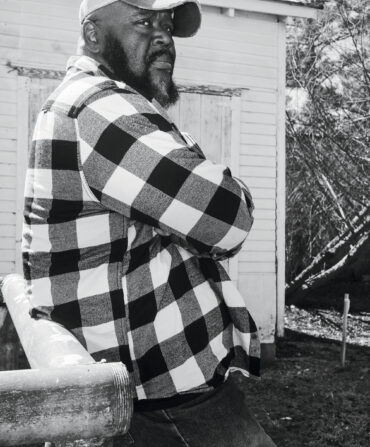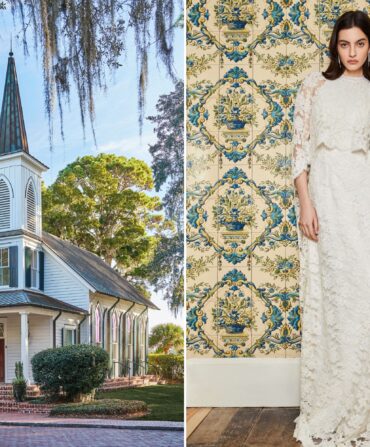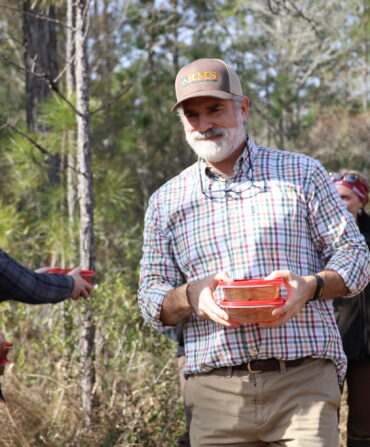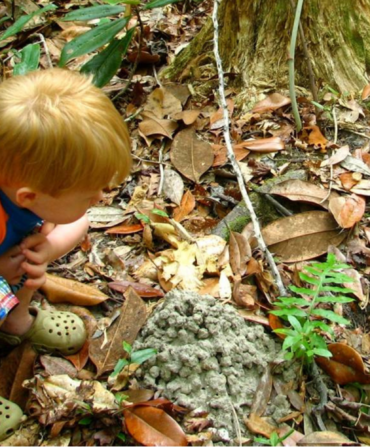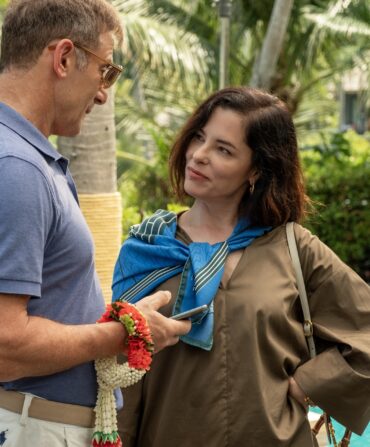Arts & Culture
A Century On, the Chincoteague Pony Swim Still Sparks Unbridled Joy
The Virginia tradition connects generations of Saltwater Cowboys, the descendants of Misty herself, and two islands where wildness reigns
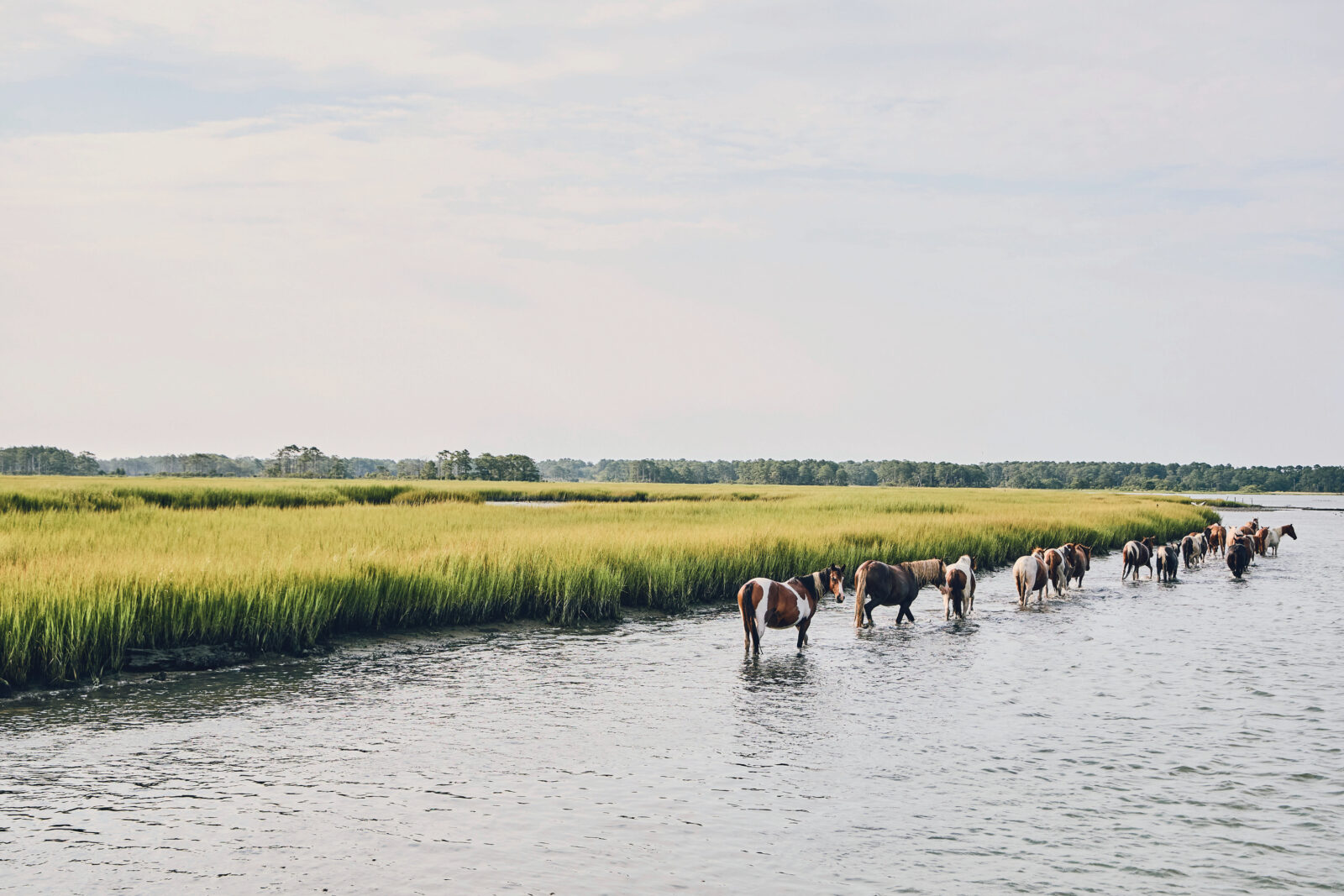
Photo: Peter Frank Edwards
Wild ponies roam near Assateague Island, off the Virginia coast.
Brooks Leonard is a fifth-generation saltwater cowboy. Last summer, he was close to three feet tall, fond of crackers, and on the thrilling cusp of turning three years old. As such, he is perhaps more of a cowboy in training than a full-fledged cowboy, but he already knows how to yell, “Hey! Hey! Hey!” when he sits on a pony, the way the adult Saltwater Cowboys do when they round up the wild ponies on Assateague Island and drive them every summer across the channel to Chincoteague Island, Virginia.

His ease makes sense: Brooks has a distinguished pedigree. His great-great-uncle—also shouting, “Hey! Hey! Hey!”—took part in the first pony roundup a hundred years ago, in 1925, as has every male progenitor in his family line since. At the time I met Brooks, his father, Hunter, and his uncle Ayden had just finished riding in the 2024 roundup, just as they have for almost a decade. Brooks’s presence in the roundup is only a matter of time.
Lineage is important on Chincoteague—for people, for ponies. For the ponies, it’s a matter of a scrupulously detailed public record. Take, for instance, SCC Misty’s Hailstorm, a bay-and-white mare with a wide, white blaze, who lives unfettered in the island woods except for the few times a year she is corralled for pony business like vet checks. Technically, she may be a wild animal, but she also has an entire web page detailing her heritage, beginning with the note that she is the “Great Great Great Great Granddaughter of Misty” and descends from Misty or Misty-adjacent horses seven times, including her mother, Winter Moon, and grandfather Cyclone II. By Chincoteague standards, this makes SCC Misty’s Hailstorm—known to her friends as Hailey—Burke’s Peerage–level aristocracy. The fine slicing of the Chincoteague pony pedigrees is maintained to an astonishing degree: in particular, any pony’s proximity to the most famous Chincoteague pony of all, Misty. It matters to be one-sixteenth Misty descendant versus one-thirty-second, to be a great-great-grandfoal or not. It matters whether your father was a Saltwater Cowboy or whether his father was, too. To be a newcomer on Chincoteague is a strange and astonishing thing.
Chincoteague is a skinny seven-mile strip of an island off the eastern Virginia shore that used to meet the sea until the neighboring island, Assateague, shifted south and formed a jagged bumper. It’s low-slung, marshy, damp, flat; the edges melt into water when the tide is high. Farmers flocked here in the 1600s, built stout wooden houses with peaked roofs and copper weather vanes, raised chickens, dug clams. There may or may not have been a Spanish galleon carrying ponies and gold that sank here during that era, spilling more than a dozen sturdy Spanish ponies into the sea, which then swam ashore and thrived. There may or may not have been, rather than a Spanish galleon, farmers who liked letting their horses graze, untaxed, on Assateague, and over time lost track of some of them, which then multiplied and went a little wild.
Either way, a herd of approximately 150 ponies have lived on their own here, on land that is now a national wildlife refuge, as long as anyone can remember. At first, they were probably a curiosity, a mild attraction. Once a year or so, a group rode over to Assateague to gather the ponies, brand them, and separate a few for sale. By 1925, the event became formalized as Pony Penning Days, with the proceeds of the pony sales going to the Chincoteague Volunteer Fire Company, which came into official existence that same year.
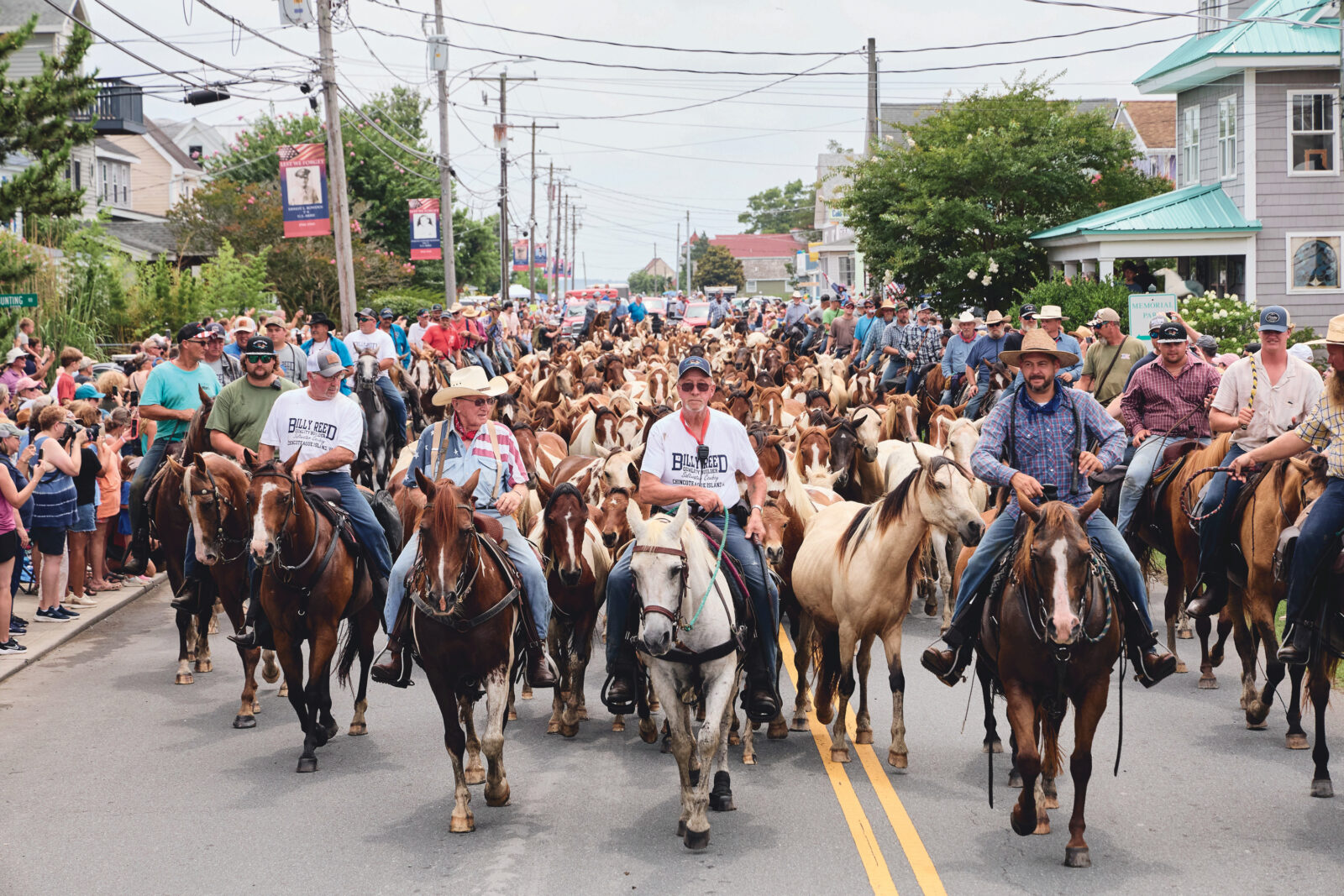
Photo: Peter Frank Edwards
Saltwater Cowboys, who are also members of the Chincoteague Volunteer Fire Company, lead the ponies through downtown Chincoteague.
The whole event might have remained a mild attraction if it weren’t for a book editor named Mary Alice Jones, who was looking for inspiration for one of her authors, an Illinois writer named Marguerite Henry, who had a fondness for animals and a knack for words. Jones suggested Henry attend one of the pony roundups on Chincoteague and use it as the basis for a book. Henry made her way to Virginia in 1946 and enjoyed it so much that she decided to buy one of the foals so she could study it closely for her book. She chose a palomino pinto with a wide white marking on her withers that, if you squinted and had a vivid imagination, looked like a map of the United States. Naming her Misty, Henry wrote the pony’s origin story, folding in the real-life Beebe family, which included a kindly set of grandparents and a brother and sister named Paul and Maureen, and in 1947 published her masterpiece, Misty of Chincoteague.

Photo: PETER FRANK EDWARDS
The Assateague Light, built in 1867.
Did Misty-mania happen immediately? It seems so. The book was a smash, and readers were not content to only live in Misty’s world on the page: They wanted to see the ponies at the annual Pony Swim make their way from their grazing grounds on Assateague across the channel to Chincoteague. Tourism to the little island popped. What’s more, these visitors wanted ponies of their own. In the book, Paul and Maureen scramble to save $100 to buy Misty’s mother, Phantom, the standard rate for a pony in those days. At last year’s auction, the eightynine foals being sold went for $7,500, $8,500, $5,000, and the like, with a few bargain ponies in the $2,000 range.
The really big money, however, was doled out for what are known as buybacks. These are a handful of foals, selected for their breeding potential, that are sold and named but then returned to live wild with the herd. The buyers are spending just for the notional satisfaction of knowing they own one of Misty’s compatriots, an animal they will never ride and perhaps never even touch. The sale of buybacks ended up particularly robust in 2024, with one leggy filly dubbed Wildfire’s Phoenix setting a record: $50,500 for a dream and a name.
You are never more than a few steps from some iteration of Misty when you’re on Chincoteague. On the drive into town, past the cheery WELCOME PONIES banner, the most prominent commercial feature is the marquee of the Island Theatre advertising twice-a-day screenings of the 1961 CinemaScope film Misty. In front of the theater are Misty’s hoofprints in cement. She was too old to play her younger self in the film, but she does appear in a few scenes, and she attended the premiere at the theater and immortalized herself, or at least her hooves, there.
Across the street from the theater is Sundial Books, where, when I stopped in, a friendly illustrator named Allison Clark was signing copies of her new book Pony Swim! at a table near Sundial’s crowded Misty section, which offers the full line of Marguerite Henry’s horse books. The store, which has been around for eighteen years, has sold more than six thousand copies of Misty of Chincoteague in hardcover and paperback, and another batch of rare and signed copies and first editions. It also offers a dizzying array of other horse titles, including Surfer Dude: The Legendary Stallion of Chincoteague; Swim, Pony, Swim; and Domino Makes a Splash. Most alluringly, there is a calendar with pinup-style photos of the hunky, virile stallions of Chincoteague, filling a calendar niche usually reserved for hunky, virile firefighters.
A few steps away from the bookstore is a life-size bronze statue of Misty. A short car ride from the statue, at the Museum of Chincoteague, you will come upon the Holy Grail of Misty relics: the taxidermied remains of Misty herself—a husky blond pony with a white patch and a whiskery chin, captured forever gazing at the taxidermied body of her chestnut pinto foal Stormy, beneath a sign that says, emphatically, PLEASE DO NOT TOUCH MISTY.
The day of the pony swim last year was mild and dry, but the tide stubbornly persisted. The Saltwater Cowboys had gathered the herd on Assateague at dawn, and by 8:00 a.m. spectators lined the streets of town, but until the water was slack, the swim couldn’t begin. Chincoteague’s year-round population is just under three thousand people, but the pony roundup, now always the last Wednesday in July, brings in as many as thirty thousand visitors. (And perhaps more for the one hundredth anniversary event, this July 30–31.) Everything was jammed, and parking close to where the swimming ponies came ashore went for the stiff price of twenty-five dollars.
Some people braved the inky black marsh to hike as close to the swim as possible, shrieking as the mud yanked at their shoes. Even though it was a long, uncertain wait—until the Coast Guard declared the passage safe, nothing could happen—the mood was sunnily patient. Young girls roamed the crowds selling one-dollar raffle tickets to win King or Queen Neptune, the first foal to come ashore. People bought tickets by the dozen. “This is once in a lifetime,” a woman with electric-blue nail polish told me. “I want to win because I might never come again.” She flagged down a ticket girl and asked, “Do you take Apple Pay?”
Today about half of the fire department members are Saltwater Cowboys—the riders who manage the ponies and wrangle them for Pony Penning. “Do you have to like horses to be a firefighter?” I asked Hunter Leonard, who does both. “Nah,” he said, “some of the guys have nothing to do with the horses.” But it’s certainly a point of pride.
There is no fire tax in town, and there have been epic fires, so the revenue from the event pays all the bills. With pony prices soaring—2024’s auction brought in $547,700—the department is in clover. But the spirit of Pony Penning Days is more celebratory than monetary. “This is Chincoteague Christmas,” Denise Bowden, one of the firefighters, told me. “This is our holiday. There is nowhere else in the whole wide world I’d rather be.” Many of the spectators wore T-shirts from Pony Pennings past—2020, 1998, 80TH ANNUAL. It’s almost a boast, a sign that you’re a regular, part of the hometown team.
Suddenly, a ripple ran through the crowd: The Saltwater Cowboys stationed to receive the ponies had arrived on horseback. They slouched in their saddles with the easy posture of longtime riders. For one, a man named Jack Brittingham, this was his forty-fourth Pony Penning. At ninety-one years old—a Saltwater Cowboy record—he sat straight-backed, slim, and bright-eyed. His horse, Red, was half Chincoteague pony and half Arabian. I asked Brittingham if he had ridden all his life. Nah, he answered. He had ridden before, but he didn’t join the famous swim until 1980. What changed? “I got divorced,” he said, chuckling, “and I was looking for something to do.”
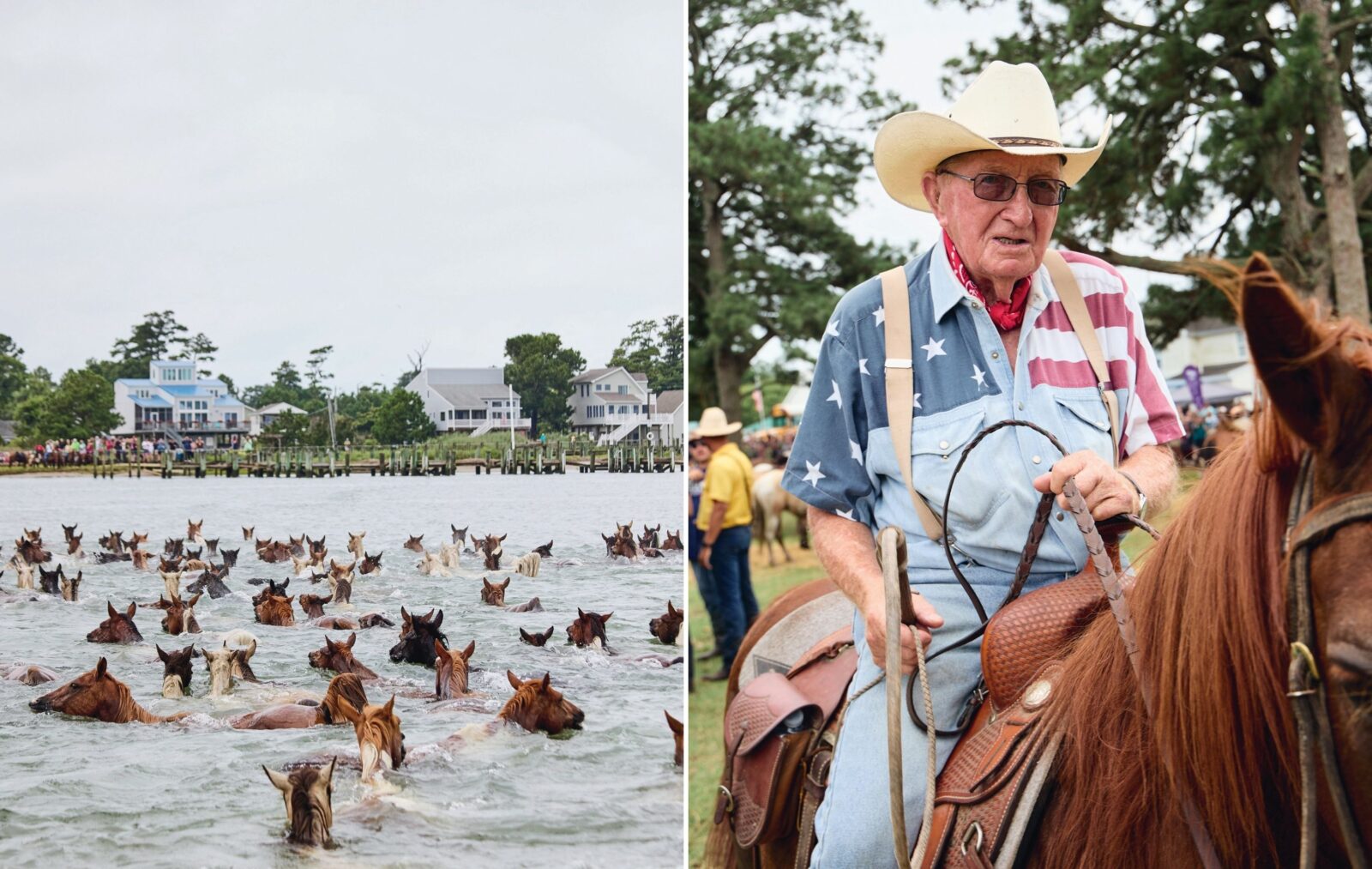
Photo: Peter Frank Edwards
Ponies swim across the Assateague Channel to Chincoteague Island; Jack Brittingham rides in his forty-fourth Pony Penning.
The flare went off at last. In the far distance, I saw tiny figures moving in a line toward the water. In another minute, they appeared on the far shore, a single unit of bay and chestnut and pinto and palomino, roiling and snorting and then finally plunging into the channel. They surged across, their heads just above the water, and in less than five minutes, they clambered onto the Chincoteague shore. King Neptune, a tiny bay colt, was identified to great applause. “Hey! Hey! Hey!” the Cowboys hollered, moving the herd to a path and eventually onto the road, where they trotted across town to the carnival grounds. One of the young spectators in the marsh limped out, holding a rubber boot in one hand and wailing, “I got mud on my white collared shirt!” but everyone else seemed to have had a fabulous time.
The herd finished the parade in a large corral near the Tilt-A-Whirl and the Pony Fries stand, which would come to life later, after sundown. For now, the animals settled in, lipping up hay and resting.
In another corral, three mares and a liver stallion with a dramatic blond mane circled excitedly. They had also been rounded up but kept in separate quarters from the rest of the herd. The stallion, named Riptide, is controversial. No one denies his handsomeness. He is heavily muscled and satin coated, and the shock of blond hair gives him the swishy hauteur of a K-pop singer. He was separated from the main herd, which includes nine other stallions, because he’s feisty, a fighter. “He’s a bad boy,” one woman told me as she ticked off foals she wanted to buy from the latest Identifying Chincoteague Ponies book. “Everyone loves him, but he’s a bad boy.” How bad a boy is where the controversy lies. He can be trouble to manage. On the other hand, he has a Facebook fan group with almost four thousand members and admirers who defend him (“Is Riptide the ‘only’ stallion of all the stallions…that acts like a ‘stallion’? Or are all the others just perfect little angels…sorry I’m not trying to be a smartass, but it is so annoying to constantly see these posts about how he is such a bad boy and deserves to be removed from everyone.”). It’s almost like the social squabbling that happens in a small, tight-knit town—which, of course, it is.
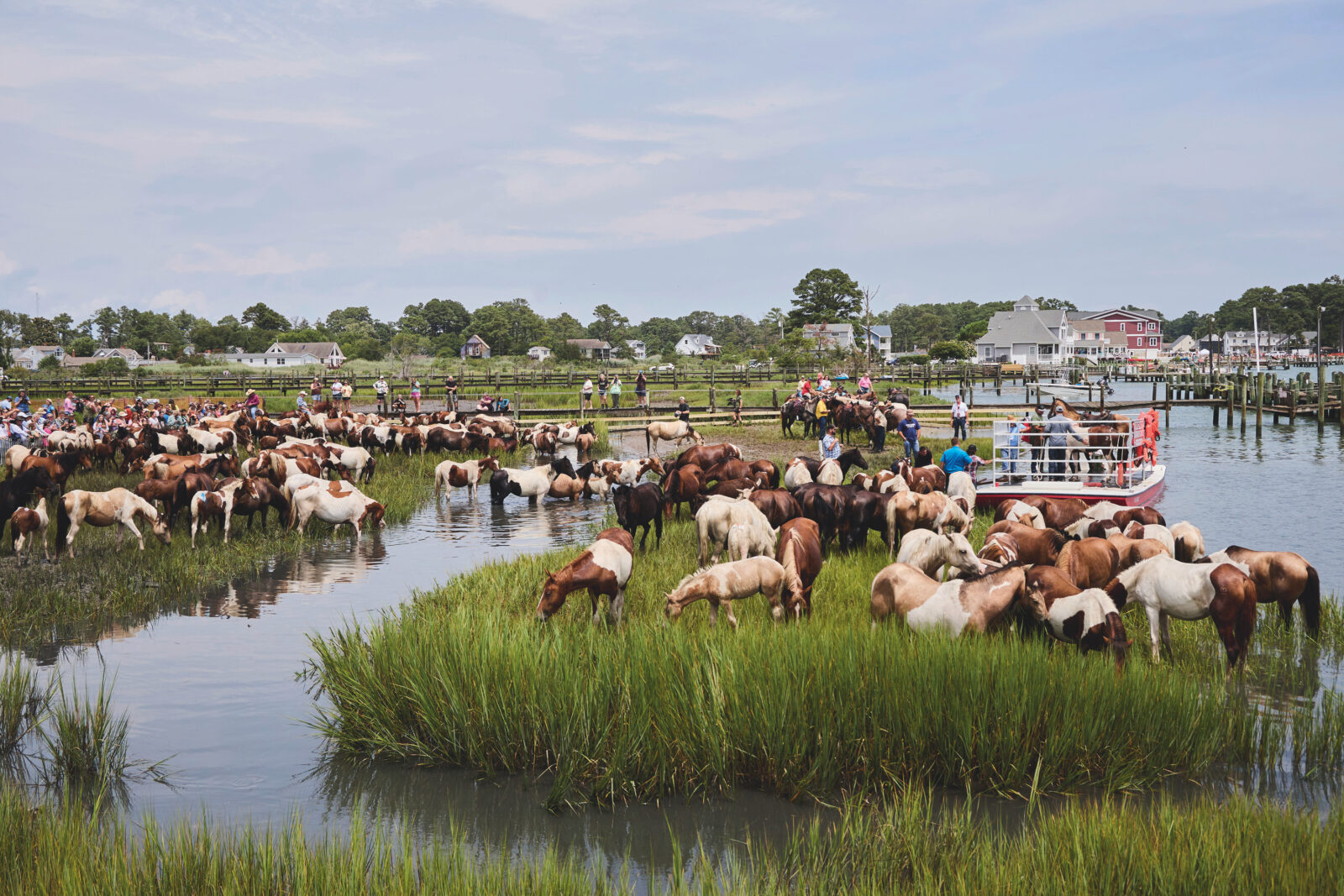
Photo: Peter Frank Edwards
Ponies linger in the channel.
The auction would be held the next day, so I devoted the afternoon to the 2:00 p.m. showing of Misty. I read Marguerite Henry’s book over and over again when I was a kid and ached with the wish to hang out with Grandpa Beebe and watch the ponies swim, but for some reason I had no memory of the movie, so I was eager to go. The big art deco theater was nearly full when I arrived at 1:30, and at capacity when the movie rolled. It’s faithful to the book, and just as romantic, depicting children living half wild, like the ponies: going barefoot, riding bareback, having only kindly grandparents to answer to and no annoying parents around (in the book, Paul and Maureen’s parents are described in passing as being “in China,” but the movie implies that they are dead). The real protagonist of the book and the film is Phantom, a mare whom Paul and Maureen buy, but who can’t stop yearning to return to the wild, and eventually does. Misty, her foal, is more user-friendly, and prefers staying with the kids.

Photo: Peter Frank Edwards
Pony Swim spectators stretch across Assateague Channel.
In real life, Misty lived with Marguerite Henry in Illinois for several years and was then sent back to Chincoteague to live with the Beebe family so she could be bred. She was occasionally compliant, learning tricks like shaking “hands” and posing for photos, but she was also known as a biter, a kicker, and a bucker, not especially nice. But her book counterpart was the stuff of fantasies, and the fantasies, almost eight decades after the book was published, linger. As the auctioneer would later say, when the bidding for a Misty descendant went sky-high, “This is an eight-year-old girl’s dream come true. No matter what age they are.”
The next day, the auction began at 8:00 a.m., and every inch around the auction corral was mobbed well before then. In addition, the auction was broadcast live on the internet, accommodating bidders around the world. Chincoteague pony is now a recognized horse breed, as well as being the state pony of Virginia. Small and sturdy, adapted to living on scrubby salt marsh plants, the ponies are valued for being fun to ride and easy to care for—and for their relationship to Misty. “No Discover cards!” the auctioneer bellowed before starting the bidding on a jumpy chestnut colt. More than eighty foals would be sold that day.
Several of the winning bidders burst into tears when the auctioneer yelled, “Sold!” The prices were astonishing, since these are untrained youngsters, and they kept climbing. The first “buyback” went for $41,000. I couldn’t fathom paying that much for a foal, especially when the animal would never be in the owner’s possession. The woman seated next to me—owner of thirteen horses, trying hard not to buy another—said that many buybacks are bought by businesses, whose owners appreciate that the money goes to the fire department, so it’s a charitable donation with tax benefits. Others, she said, are bought by big Chincoteague pony fan groups, whose members each donate a few dollars, and who can then enjoy the idea that a gorgeous creature they helped name is running around in a national refuge.
The crowd was assorted, including several Amish families, from Lancaster, Pennsylvania, who have become regular summer visitors on Chincoteague. There was a mix of both men and women, although there was perhaps a larger number of horse girls overall. I was a horse girl, and besides reading Misty a million times, I read all of Henry’s other books and cherished them. I thought I remembered the entire plot of Misty. I remembered Henry’s hilarious description of Grandpa Beebe’s hairy ears and the family’s meals of potatoes and oysters, utterly exotic to me as an Ohio kid. I mooned over each Misty illustration, marveling at her whiskery lips, her big eyes. Before going to Chincoteague, I had decided to read it again, since it had been decades. It was familiar yet completely shocking: I had no memory at all of the character Paul. In my mind, the book was just about a horse and a girl. Without realizing it, I had rewritten the book to be my private dream.
All of Chincoteague celebrates Pony Penning Days. Some restaurants close so employees can participate. Locals rent out their yards for parking. Traffic is impossible, but no one rages (the town provides trolleys and shuttles). There is no seating at the auction, but everyone, as if on cue, arrived with folding chairs and shade umbrellas, ready to wait. The proceedings continued for hours. Every sale was applauded with as much enthusiasm as if it were the first of the day.
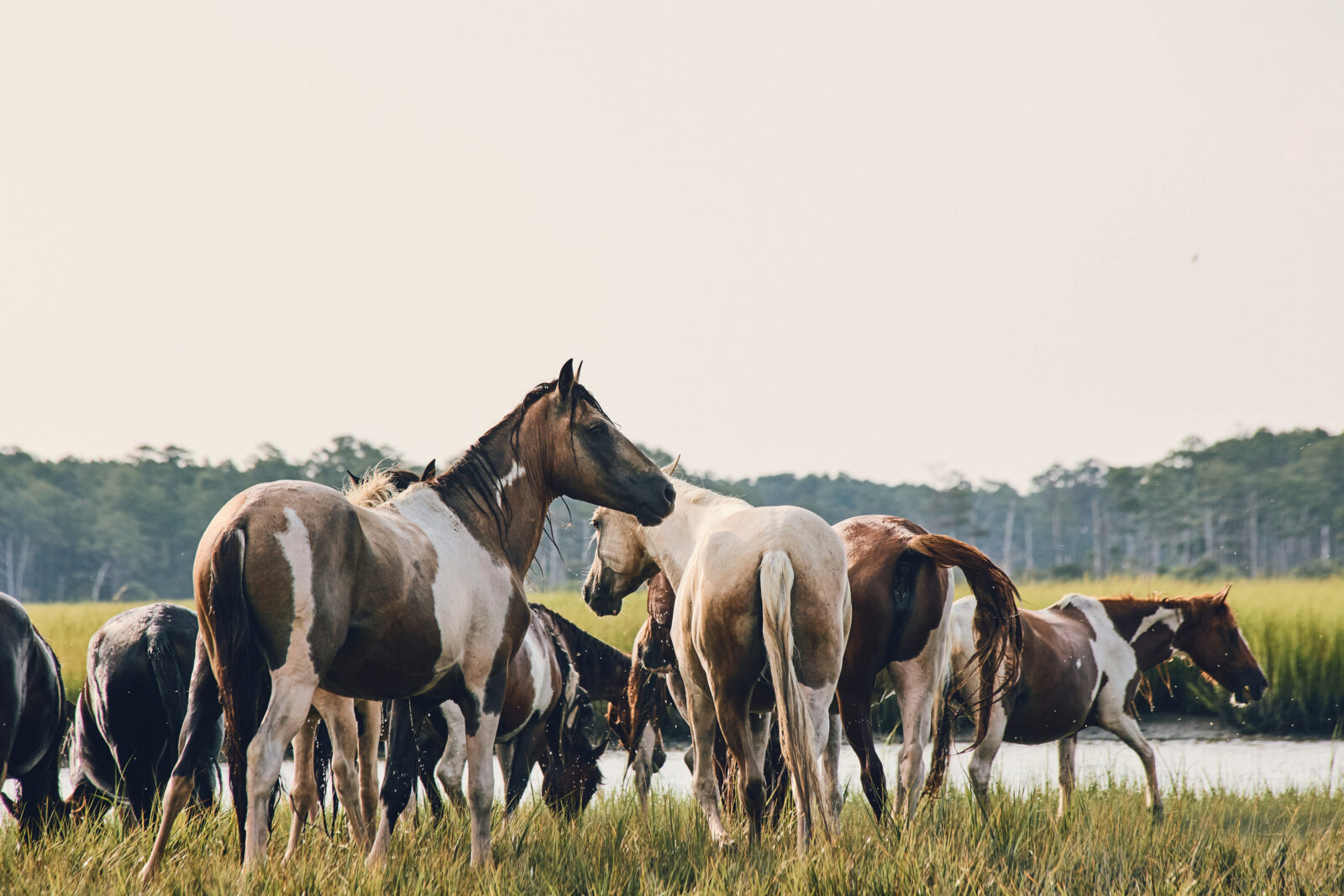
Photo: Peter Frank Edwards
A “buyback” pony named Tornado’s Legacy, along with the rest of the wild herd, grazes on marsh grass back home on Assateague.
I kept my arms glued to my side, so I didn’t inadvertently, on purpose, raise a hand to bid. People focused intently, and many kept a running list of winning prices and discussed the foals earnestly, usually with what was clearly deep knowledge of their pedigree. After all, ponies live a long time—some for thirty years—so many of the Chincoteague animals have made this trip dozens of times and were as familiar to the crowd as movie stars. In that sense, the whole experience was like a magical visitation—these snuffling, tail-swishing creatures are celebrities making themselves visible for a short moment, and then they will be whisked away and will live hidden until the next Pony Penning Day.
The woman next to me had been studying her pony list carefully. Was this her first time? No, she said. In fact, she said, in 2015, she won the raffle for King Neptune, a rambunctious colt she named SeaSalt. He was a great horse. Was winning a surprise? “No,” she said. “A few days before, a friend of mine had a dream that we’d win.” She smiled and added, “That was my one minute of fame.”
Garden & Gun has an affiliate partnership with bookshop.org and may receive a portion of sales when a reader clicks to buy a book.



